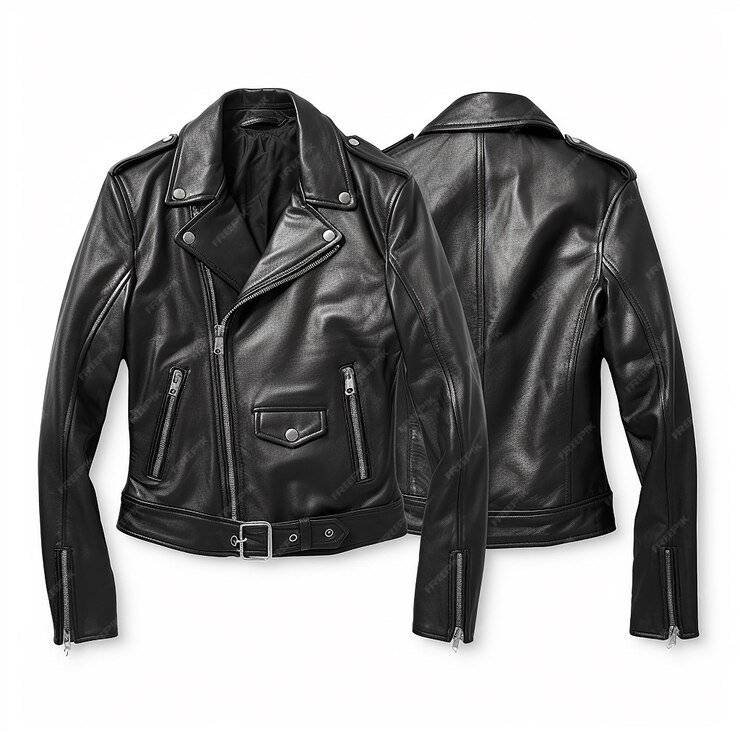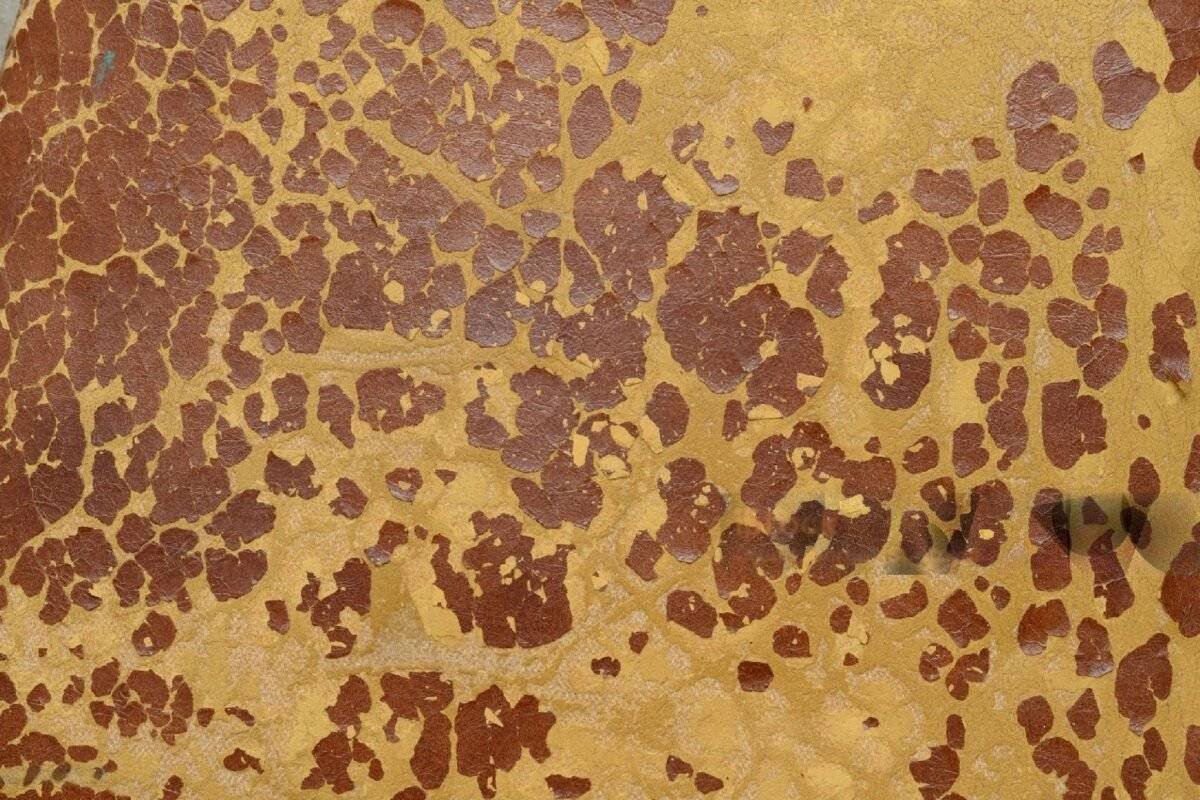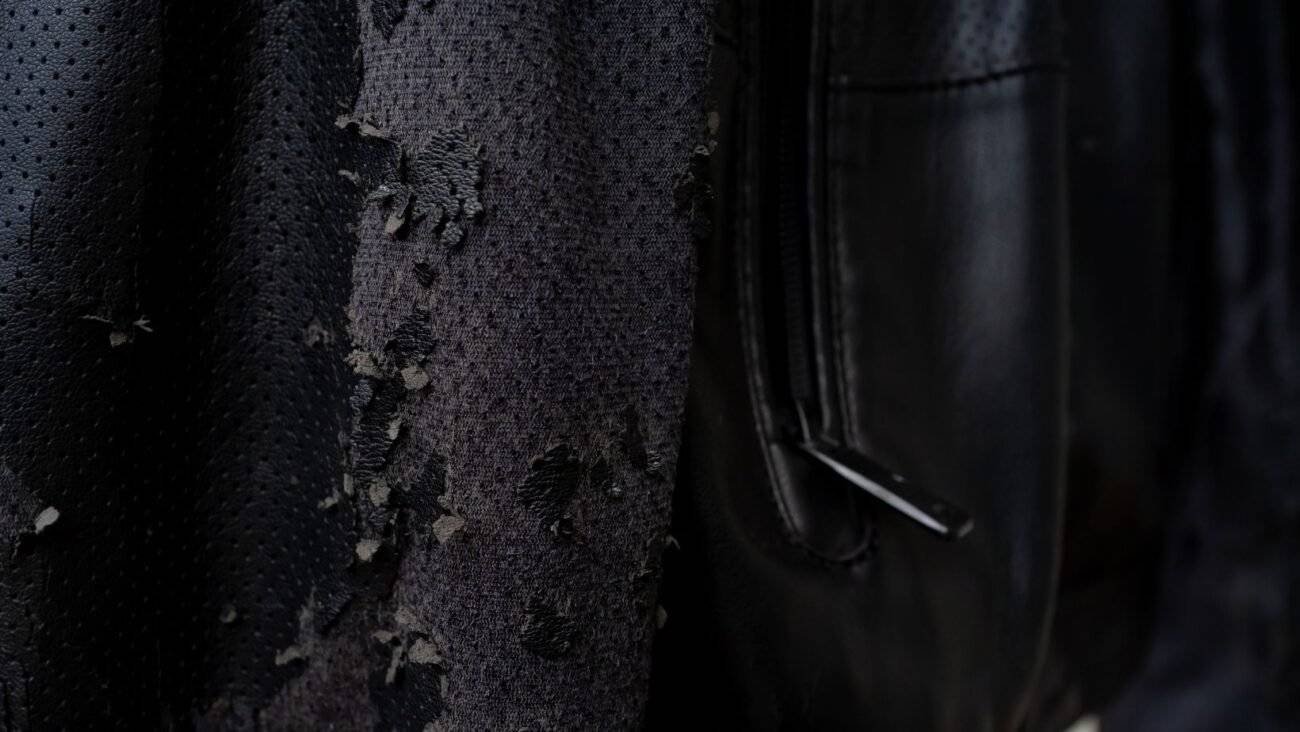Faux leather jackets are a popular and stylish alternative to genuine leather. They offer the same sleek look at a fraction of the cost and are often more environmentally friendly. However, one common issue with faux leather is its tendency to peel over time. If you’re dealing with a peeling faux leather jacket, don’t despair. This comprehensive guide will walk you through the steps to repair your jacket and restore it to its former glory.
Understanding Faux Leather
When selecting a jacket, whether faux leather or genuine leather, it’s essential to consider key features for both style and protection. If you’re a motorcyclist, understanding these features can make a world of difference in your gear. Learn more about the best features to look for in a motorcycle jacket to ensure your safety and comfort.

Types of Faux Leather
- PU Leather: Made by coating a fabric base with a flexible polymer and then treating it to look more like animal hide.
- PVC Leather: Made by adding plasticizers and other chemicals to PVC to make it softer and more flexible.
Why Faux Leather Peels
Faux leather peels due to a combination of factors, including poor quality materials, exposure to heat and sunlight, and general wear and tear. Over time, the top layer of the material can degrade, causing it to peel away from the backing fabric.

Common Causes of Peeling
- Heat and Sunlight: Prolonged exposure can dry out the faux leather, leading to cracks and peeling.
- Wear and Tear: Regular use, especially in high-friction areas, can cause the material to wear down.
- Improper Care: Using harsh chemicals or not cleaning the jacket properly can accelerate the peeling process.
Preparing for the Repair
Before you start repairing your faux leather jacket, gather all the necessary materials and prepare your workspace.
Materials Needed
- Faux leather repair kit
- Soft cloth
- Rubbing alcohol
- Sandpaper (fine grit)
- Leather filler or adhesive
- Paintbrush
- Acrylic paint (matching the color of your jacket)
- Clear coat or sealant
Preparing Your Workspace
- Clean the Area: Ensure your workspace is clean and free of dust.
- Ventilation: Work in a well-ventilated area to avoid inhaling fumes from the repair materials.
- Protect Your Work Surface: Lay down a cloth or paper to protect your work surface from spills and stains.

Repairing Minor Peeling
For minor peeling, a simple repair can often do the trick. Follow these steps to fix small areas of peeling on your faux leather jacket.
Step-by-Step Guide
- Clean the Area: Use a soft cloth and rubbing alcohol to clean the area around the peeling. This removes any dirt and oils that could interfere with the repair.
- Sand the Peeling Area: Gently sand the peeling area with fine-grit sandpaper to create a smooth surface for the repair.
- Apply Leather Filler: Using a paintbrush, apply a thin layer of leather filler to the peeled area. Smooth it out and let it dry according to the manufacturer’s instructions.
- Paint the Area: Once the filler is dry, apply acrylic paint that matches the color of your jacket. Use thin, even coats and allow each coat to dry before applying the next.
- Seal the Repair: After the paint is completely dry, apply a clear coat or sealant to protect the repaired area from future damage.
Repairing Major Peeling
For more extensive peeling, you may need to take additional steps to ensure a durable repair.
Step-by-Step Guide
- Remove Loose Material: Carefully trim away any loose pieces of faux leather with scissors.
- Clean and Sand the Area: Clean the area with rubbing alcohol and sand the surface to ensure good adhesion.
- Apply Leather Adhesive: Spread a layer of leather adhesive over the entire area where the faux leather has peeled. Press the faux leather back into place and smooth it out.
- Fill Gaps: If there are gaps or missing pieces, use leather filler to fill them in. Smooth the filler with a spatula and let it dry.
- Paint and Seal: Paint the repaired area with matching acrylic paint and seal it with a clear coat to protect it.
Preventing Future Peeling
To extend the life of your faux leather jacket and prevent future peeling, follow these tips:
Tips for Longevity
- Avoid Heat and Sunlight: Store your jacket in a cool, shaded place to prevent it from drying out.
- Use Proper Cleaning Products: Clean your jacket with products specifically designed for faux leather. Avoid harsh chemicals and abrasives.
- Regular Maintenance: Periodically apply a faux leather conditioner to keep the material supple and prevent cracking.
- Handle with Care: Be gentle when wearing and removing your jacket to minimize stress on the material.
Maintenance Tips
Maintaining your faux leather jacket properly can significantly extend its lifespan. Here are some maintenance tips to keep your jacket looking its best:
Cleaning Your Jacket
Regular Dusting: Use a soft, dry cloth to dust off your jacket regularly.
Spot Cleaning: For small stains, use a damp cloth and mild soap. Gently rub the stain until it lifts.
Deep Cleaning: Occasionally, give your jacket a deep clean with a faux leather cleaner. Follow the product instructions carefully.
Storing Your Jacket
- Hang Properly: Always hang your jacket on a wide-shouldered hanger to maintain its shape.
- Cover It Up: Use a garment bag to protect your jacket from dust and moisture when not in use.
- Avoid Folding: Folding can cause creases and cracks. If you must store your jacket in a compact space, roll it gently instead.
Frequently Asked Questions
1. How do I prevent my faux leather jacket from peeling?
To prevent your faux leather jacket from peeling, avoid exposing it to heat and sunlight, clean it regularly with appropriate products, and apply a faux leather conditioner periodically to keep the material supple.
2. Can I use regular leather repair kits on faux leather?
Yes, many leather repair kits are suitable for both genuine and faux leather. However, it’s important to check the product specifications to ensure compatibility with synthetic materials.
3. How long does it take to repair a peeling faux leather jacket?
The repair process can take anywhere from a few hours to a couple of days, depending on the extent of the damage and the drying times for the products used.
4. Is it worth repairing a faux leather jacket, or should I buy a new one?
Repairing a faux leather jacket can be cost-effective and environmentally friendly. If the damage is extensive, consider the repair cost versus the price of a new jacket before deciding.
5. Can I prevent faux leather from peeling by using a fabric protector spray?
Using a fabric protector spray designed for faux leather can help repel moisture and stains, which can indirectly prevent peeling by keeping the material in better condition.
Conclusion
Repairing a peeling faux leather jacket might seem daunting, but with the right tools and techniques, you can restore your jacket to its former glory. By following the steps outlined in this guide and taking proactive measures to prevent future peeling, you can extend the life of your favorite faux leather jacket. Whether you’re dealing with minor or major peeling, this guide provides the information you need to tackle the problem effectively. Happy repairing!







